Stardate: January 27,2020
Sighs too deep for words.
I really think that is all I can say for Hebron. What I saw and what I experienced, I don’t know how to put it into words.
I keep coming back to the idea of how people who lived through the extermination in Germany in the thirties and forties, how they can relate to the idea of a sterilized street.
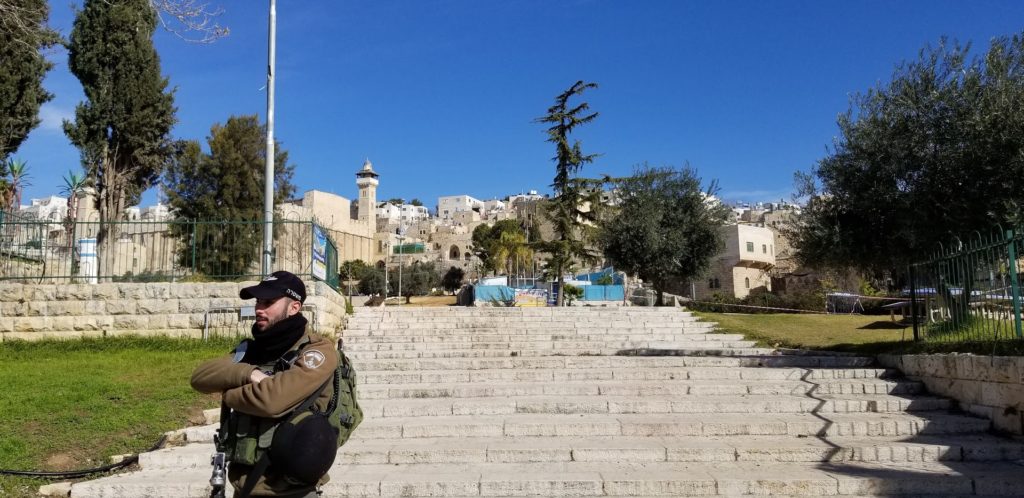
When we got to the steps and the soldier came over to block us, I have to say that my first thought was a little surreal, like we’re obviously American tourists and to be stopped seemed odd. And then to be told that part of our group couldn’t walk through because it was a sterilized street… It was an experience that boggles my mind.
The old men sitting at the corner were picturesque. The way that I kind of expected a lot of what we would see would look like. And then we turned the corner onto a street that was so empty and boarded up. It was so deserted that it felt odd.
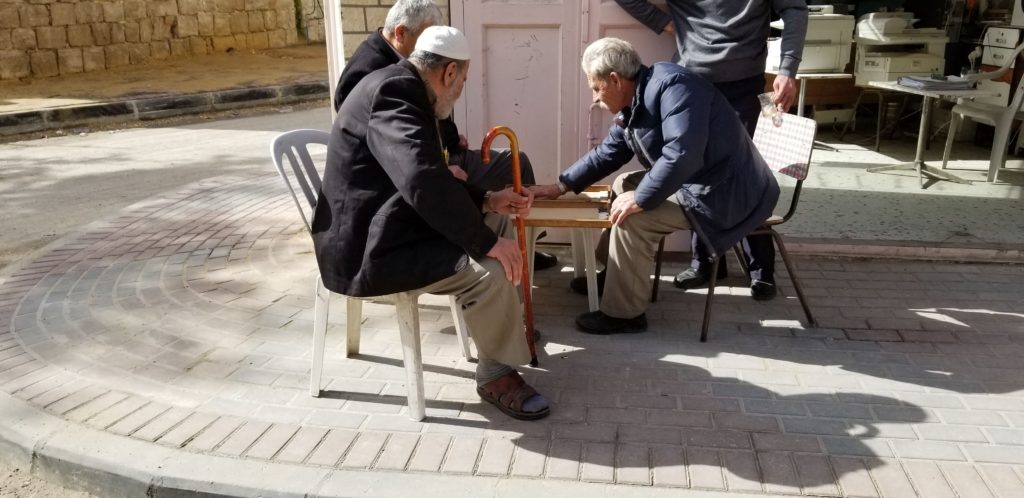
I tried to imagine how Rami, Wyal, DilNaz and Miriam felt. I have no doubt that their emotions were very different from mine. I tried very hard to put myself in their shoes and what that would feel like, how their minds must be racing. And yet they all seemed to take it in stride as if it were nothing.
At one point we were being solicited on the street to purchase stuff, and they were so pushy and so desperate. Then when we got to the point where we were refusing and we walked on, a man started screaming about Americans and America and how awful we are and then when we returned and he apologized in an attempt to sell us his stuff it was, I don’t quite have words to describe how I felt about that.
When we were stopped at the corner we were required to show our passports. I wasn’t afraid because I knew who I was and that I was allowed to be where I was and yet the fear tactic was palatable. It made me think of how police tactics are the same all over the world and how young black people, black people in general in the United States are stopped, and there’s this fear tactic that is used as a means of keeping them in line and I felt that I was maybe experiencing that for the first time in my life, this fear tactic being thrust upon me as a means to make me feel unsure or unsafe or to keep me in line in some way.
I can’t imagine what it would be like to live where I could not step out of my house without having to go out of the back door.
I remember being told of a sign that was in Buchanan County Virginia. I was told of this when I was a child that there was a sign as you crossed into the county that said “Nigger, don’t let the sun set on you in Buchanan County.” Being in Hebron made me feel the same way. That type of hatred, that type of disdain for another human and how it must feel to African American, Muslim, Jewish and others in our society.
We went to the refugee camp at Ada. When we got there I was struck first by the the murals on the wall, by the graffiti that had been painted. Some of it was beautiful. I was struck by the narrow streets and the way that it felt so confining so, so like an updated version of a Jewish ghetto in Poland in 1939.
We went into the community center and it seemed like any other community center in a depressed area. And then our speaker came in and he started to describe his personal journey and who he was and why he was where he is. I have to admit that I was shocked to find out that he had left America and that he was well educated. He had his PhD, and yet he came back to live in this refugee camp in this ghetto. It was a bit mind boggling to me.
I think that it has struck me so much that this land is so loved by so many people that they are willing to come back. That they find an escape and then come back. It is a bit beyond my comprehension to love a land, a space, a place that much .
I kept coming back to this idea that “How do you get out of this? How do you take all of these people who live in this refugee camp and extricate them from this place?” The man who spoke with us was born into this refugee camp. He was about my age, maybe a little younger and he was born there. His children were born there. His grandchildren will be born there. How do you extricate families? How do you change? What does that look like?
I was very excited to visit Bethlehem. I collect nativities and somehow the idea of being in Bethlehem seemed so important to me. And then after what we had experienced, after what we had been through, what we had seen and what we had been witness to, arriving at the Church of the Nativity seemed very anticlimactic. I never really believed that the Church of the Nativity is actually the place where Jesus was born. I believe that we don’t know where any of these places are and I think that we are not supposed to know where the places are, simply because we would do what has been done. We would come and worship that place and I don’t believe that is something we are supposed to do. Yet I wanted to see, I wanted to experience, I wanted to be in this sacred place that at least was representative of the birth of Christ. And yet when I arrived, all I could think of was “yes it’s beautiful, but it’s beautiful in the way that churches are beautiful. It’s beautiful in the way that we, man, can make something and call it sacred and call it good” and yet we had just come from a place that did not reflect the beauty, did not reflect the sacredness of place. The dichotomy was glaringly clear to me. And although I knew that I was not going on this trip to “walk where Jesus walked”, I started to wonder how I was going to take this message home How am I going to speak to this? How am I going to describe it? How am I going to find words to be able to share with others this trip? To bring this heartbreak and heartache and horribleness home, and share it with people who were expecting to hear about walking where Jesus walked, about being in holy spaces, about touching relics and experiencing a place. I still don’t know how I’m going to do that.
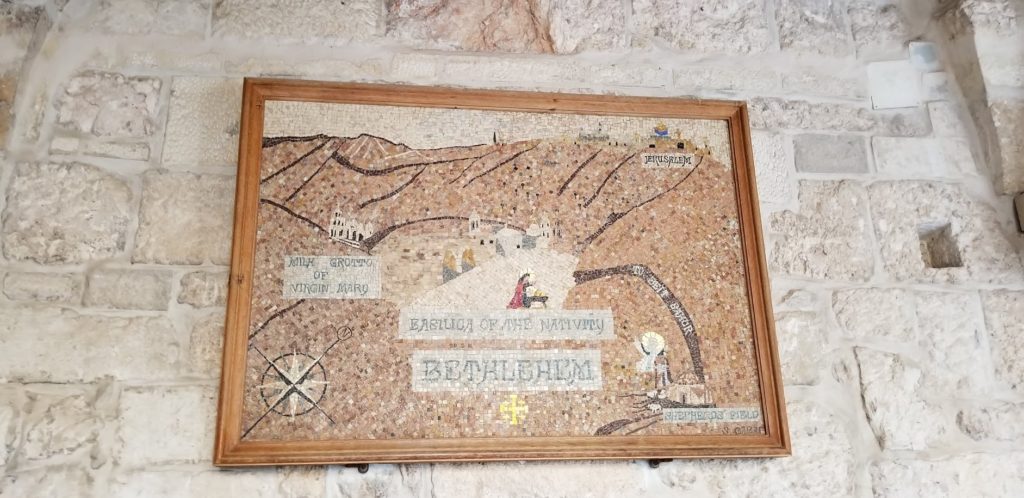
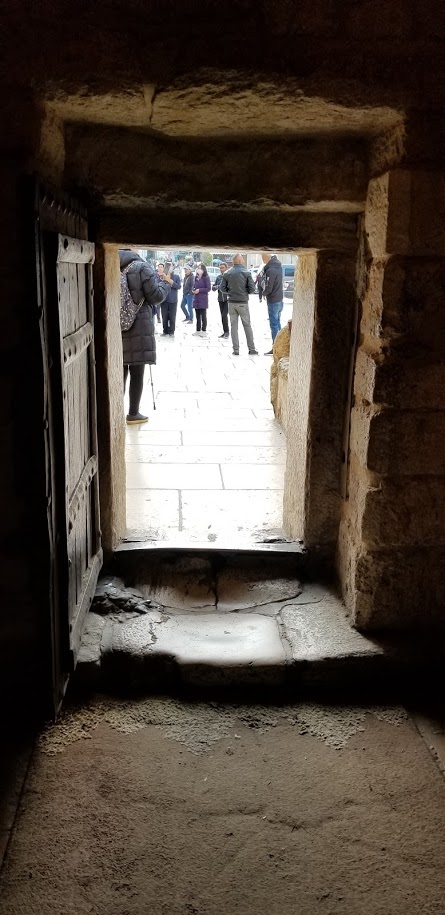
We met with Sami at the land trust and he told a story about a “bearing witness retreat”. He told the story of a Jewish man who came to the retreat and who didn’t share, who didn’t talk really throughout the whole retreat and then on the last day his comment was about seeing the Nazi in himself. I thought it was an absolute punctuation mark on the day. I think too often we fail to see the Nazi in us. We fail to see the white supremacist in us. We fail to see in ourselves the reflection of those who would do harm to others. It seems like a very important message that I will take home and that I will spend a considerable amount of time trying to share.
I want to spend just a minute of my journal time talking about and sharing about the Bethlehem fair trade artisans. As someone who spends a lot of time with artisans in the United States, who spends a lot of time doing fair trade events for things that are handmade so it seems so appropriate that it is where I brought home virtually all of my souvenirs. Things that have been created by locals who are actually making decent money off of what I purchased. It really was the feel good moment that encapsulated the whole day.
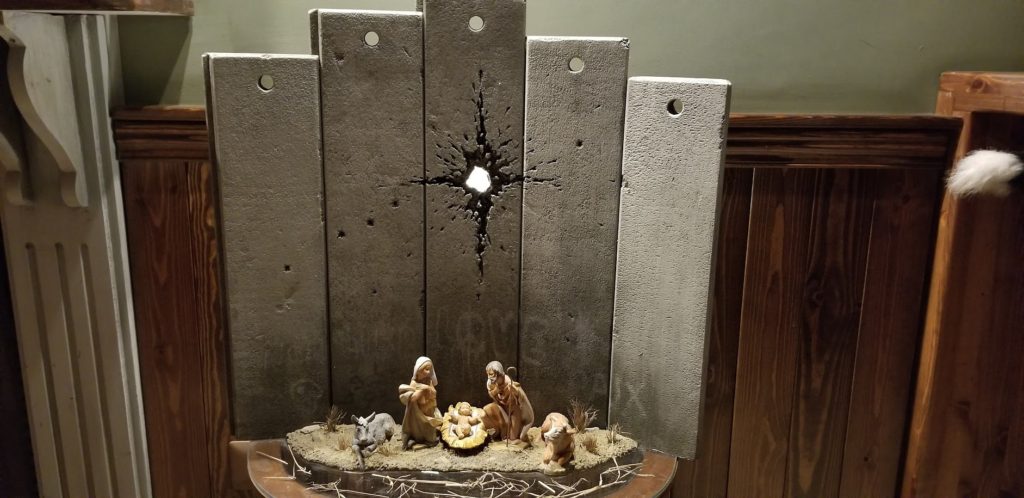
I would be remiss if I didn’t talk about the chance to go see the Banksy Museum. Banksy is a graffiti artist who has gained popularity throughout the world and there’s a hotel in Bethlehem where his artwork is on the walls and there is a museum that relates to his work which was very powerful and very wonderful. I attended the museum with Miriam Ali and the experience of being with a celebrity, with being with someone who was so beloved by the people in that hotel was absolutely amazing. We were taken by the owner of the hotel to a museum that he was opening. He wanted us to be the first people to see it, if he could take a picture with Miriam and of course she agreed and it was very amazing. And one of those things that will stick with me from my journey. I think it’s because Miriam was so humble. Throughout the trip she never used her father’s name or her celebrity status for anything. It was others who knew, who pointed it out. It was others who shared who she was. And there was a great lesson in that and it made me love Miriam even more.



Leave a Reply